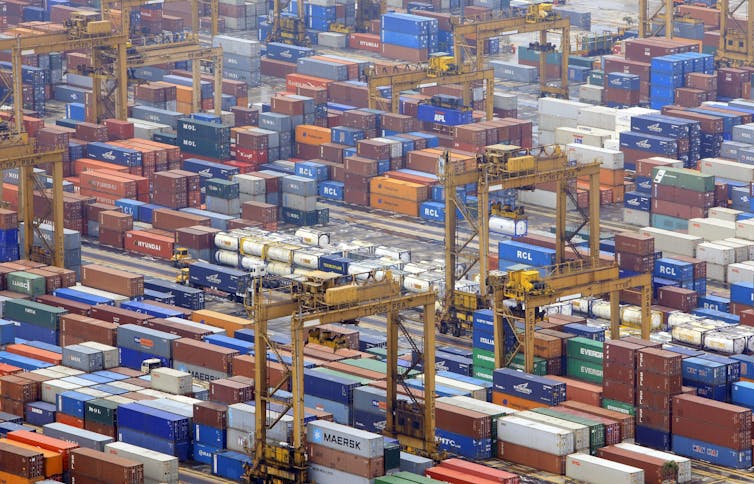With all eyes on China, Singapore makes its own Arctic moves

By Danita Catherine Burke and Andre Saramago/
Asian states are becoming increasingly interested and involved in the Arctic region. This signal was sent in 2013 when four Asian states were admitted into the Arctic Council as observers: China, Japan, South Korea and Singapore.
The council is the Arctic region’s preeminent regional discussion forum, focused on issues of environmental protection and sustainable development. Of these four Asian states, China receives the most media attention, for a number of obvious reasons, such as the size of the country’s growing economy and its expanding Arctic capabilities, including icebreakers.
All eyes on the Chinese dragon
The Arctic states are aware of China’s strength and its willingness to push forward with its international agenda, including in the Arctic. This has been met with a combination of fear and pragmatic openness.
The Kingdom of Denmark, to name one example, has expressed weariness over China’s intentions in the Arctic. In 2017, Denmark turned down an offer received in 2016 from a Chinese mining company, General Nice Group, to purchase an abandoned naval base in Greenland, citing security concerns as the justification.
Simultaneously, China has been developing business links in the region. It has been working with Russia to develop shipping along the Northern Sea Route and it reached an agreement to build a natural gas pipeline project in Alaska.
In January, China published its first Arctic policy paper. Not publishing a policy paper was interpreted by some as China’s effort to downplay its menacing image as a threat to Arctic state interests. Though the paper articulates many commonly held assumptions about China’s views of the Arctic region, including its belief that Arctic waterways, such as the Northwest Passage and the Northern Sea Route are international straits, it generated much discussion about China’s reach into the Arctic.
‘Near-Arctic state’
One statement in particular stood out.
China has labelled itself a “near-Arctic state.” This signals China’s intent to push against Arctic state hegemony and the common term “non-Arctic state” in order to insist on having a say in how the region is used.
Even before the Arctic policy paper, however, coverage of China’s motivations for its Arctic involvement have been commonplace, such as discussions about its mining interests in Iceland and its investment in the modernization of the Northern Sea Route.
At the same time, however, all the focus on China means that the actions of other Asian states on the Arctic often go unreported. Singapore is an interesting case in point.
Singapore in the Arctic
Unlike China, Singapore has successfully cultivated the image of a benign state. As such, Singapore’s Arctic interests and how it’s pursuing them have received much less attention. As a micro-state, Singapore is more limited in how it can assert itself internationally. Rather than see this as a weakness, Singapore has made this a strength.
Singapore is only 719 square kilometres in area. The country is dependent on its neighbour, Malaysia, for its fresh water since it has minimal natural resources of its own. Though Singapore invests a lot in its military defence — more than 18 per cent of its budget in 2018 — it does not have a history of using military force.
Singapore also has positive relations with both Western and Eastern countries. Singapore’s fostering of positive defence relations with multiple states is strategic.
Singapore’s defence and foreign policy is driven by its pragmatic approach toward politics. Singapore is keenly aware that its prime position in the current global shipping network is critical to both its economy and its survival.
The anticipated development of Arctic shipping routes are a potential threat to Singapore as they will redirect some maritime traffic away from it, undercutting its economy. Recognizing this, Singapore aims to be involved in Arctic development.

The Singapore port is seen in this March 2010 photo.
(AP Photo/Wong Maye-E)
One area where Singapore might be of assistance is ship-building and other maritime technology. As part of its strategy, for example, Singapore is fostering bilateral relations with Russia. Economic development and modernization in Russia is the focus.
Cultural and linguistic differences have slowed the pace of bilateral relations, but both parties are open to pursuing the relationship, with the persistence of Western sanctions making relations with Singapore more immediately appealing for Russia.
Additionally, Singapore has committed itself to being a cooperative ally to the Arctic states and peoples in the Arctic Council. It has been heavily involved in the CAFF Arctic Council working group project on migratory birds, hosting a workshop in Singapore in January.
It has also created the Singapore-Arctic Council Permanent Participant Cooperation Package to give free education opportunities in Singapore to Indigenous peoples from the Arctic region.
Singapore’s deepening ties with Russia, its involvement in Arctic cooperation and the implications of both are overshadowed by discussion about China’s Arctic ambitions and investments.
It’s time for us to broaden our view of Asian involvement in the Arctic region. Otherwise, all the focus on China will blind us to the intentions, actions and involvement of other actors.
—
Danita Catherine Burke, Postdoc in International Politics and Arctic Studies, University of Southern Denmark and Andre Saramago, Auxiliary Professor of International Relations, Universidade Lusíada Porto
This article was originally published on The Conversation. Read the original article.
Veronica Lee
Contributing writer at The Independent News
